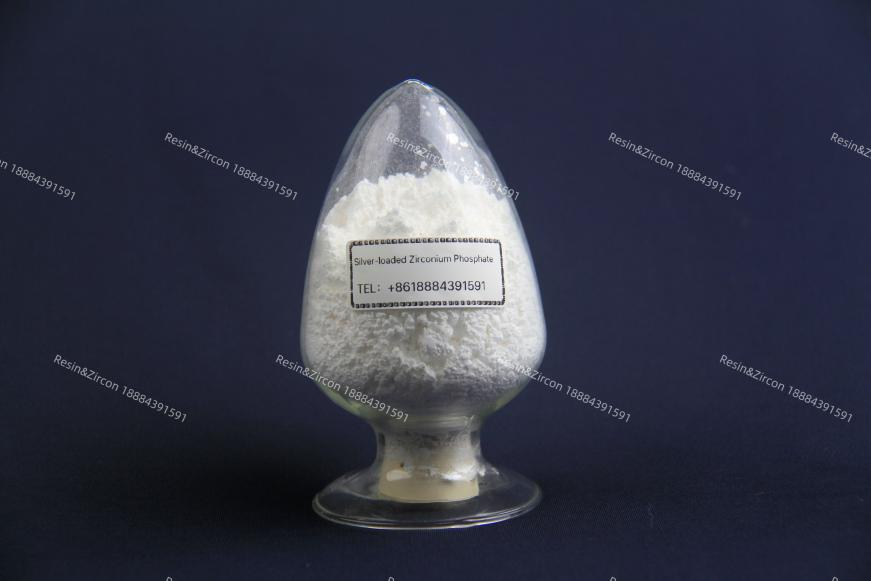Silver Loaded Zirconium Phosphate
Zirconium phosphate silver-loaded (also known as silver-loaded zirconium phosphate) is an efficient, safe, and broad-spectrum inorganic antibacterial material. With its excellent chemical stability, heat resistance, and long-lasting antibacterial properties, it has found extensive applications across various fields. The silver content in this material typically ranges from 2% to 6%, and the particle size, pH value, and silver concentration of zirconium phosphate can be flexibly adjusted according to specific product requirements.

Scope of Application:
Medical field: used for antibacterial dressings, catheter coating, dental materials, etc., to reduce the risk of infection.
Daily necessities: Add to plastics, ceramics (such as refrigerator tanks, toilet glaze) or textiles to give lasting antibacterial properties.
Water treatment: as a filter material or coating, remove pathogenic microorganisms in water.
Industrial field: used for anti-corrosion coatings, antibacterial films, etc.
1. Product Features
1.1 High efficiency of antibacterial properties
-Broad-spectrum antibacterial: Silver ion (Ag+) has a strong inhibitory effect on bacteria, fungi and viruses by destroying microbial cell membrane, interfering with enzyme activity and DNA replication.
-Persistence: Silver ions can be slowly released to achieve long-term antibacterial, especially suitable for applications that require long-term maintenance.
1.2. Stability and safety
-Carrier stability: Zr (HPO₄) ₂ has a layered structure and high ion exchange capacity, which can firmly load silver ions and reduce the loss.
-Low toxicity: by controlling the release rate of silver, reduce the toxicity to humans and the environment, in line with medical and daily use safety standards.
1.3. Physical and chemical properties
-High temperature resistance: Zirconium phosphate skeleton is stable and can withstand high temperature (usually above 300℃), suitable for high temperature processing environment.
-High specific surface area: more active sites are provided to enhance the dispersion and contact efficiency of silver ions.
Recommended Addition
2.1. Add directly
-Plastic/fiber: directly mixed into resin or spinning melt in the proportion of 0.5%~1.0%.
-Paint/adhesive: the powder is directly dispersed into the substrate, and then used after stirring evenly.
2.2. Masterbatch method
-First, the masterbatch containing 15%~20% antibacterial powder is made, and then it is added to the final product in a proportion of 3%~5%.
2.3. Surface treatment
-Nanocrystallization or modification of powder (such as adding MgO/ZnO) to improve dispersion and resistance to yellowing.
2.4. Special process
-Ceramic/glass: added during high temperature sintering to ensure stable release of silver ions.
-Textiles: long-term antibacterial through post-embroidery or fiber embedding technology.